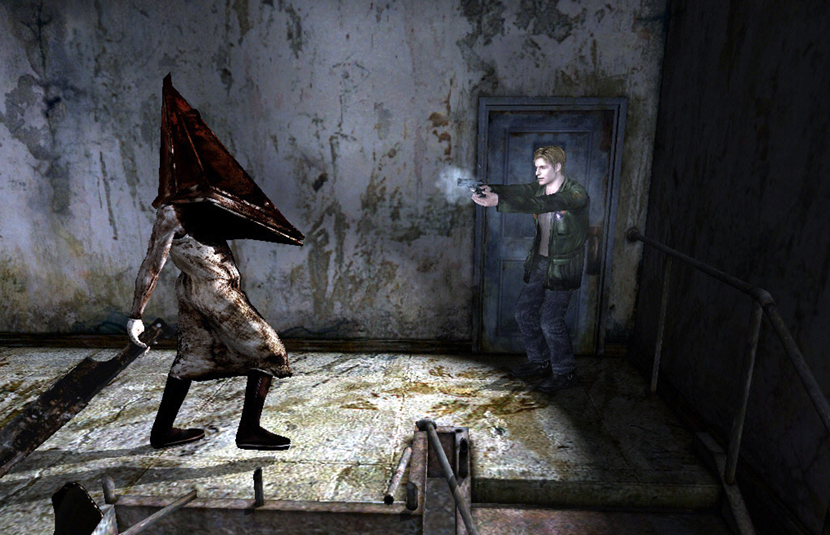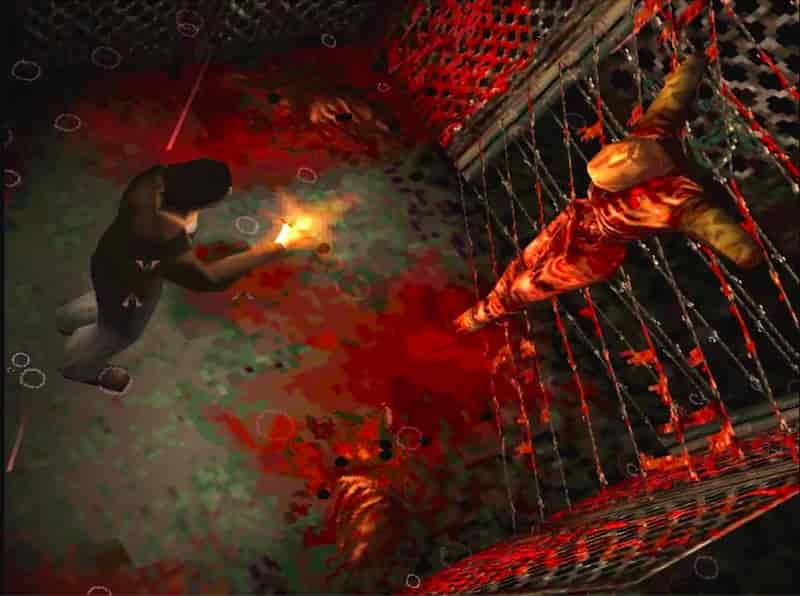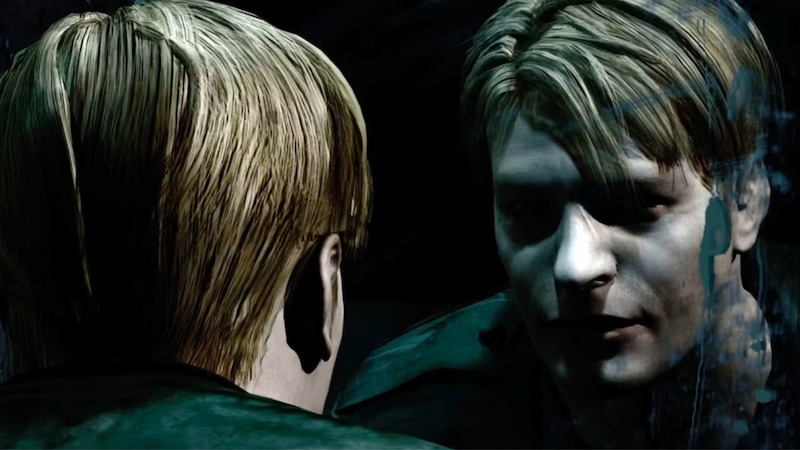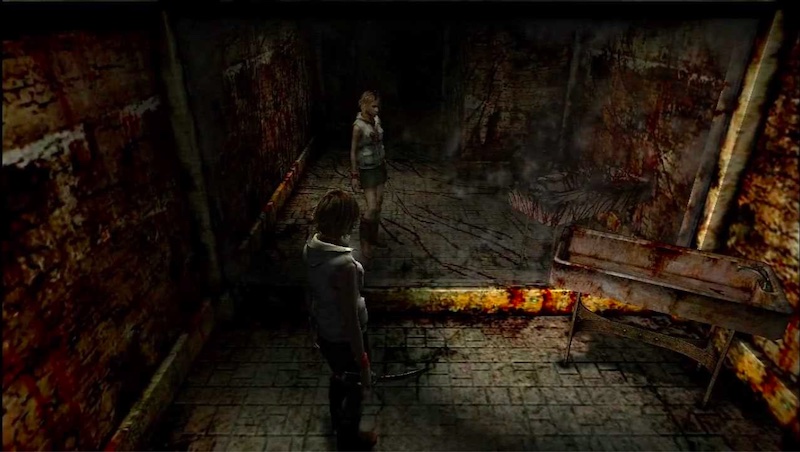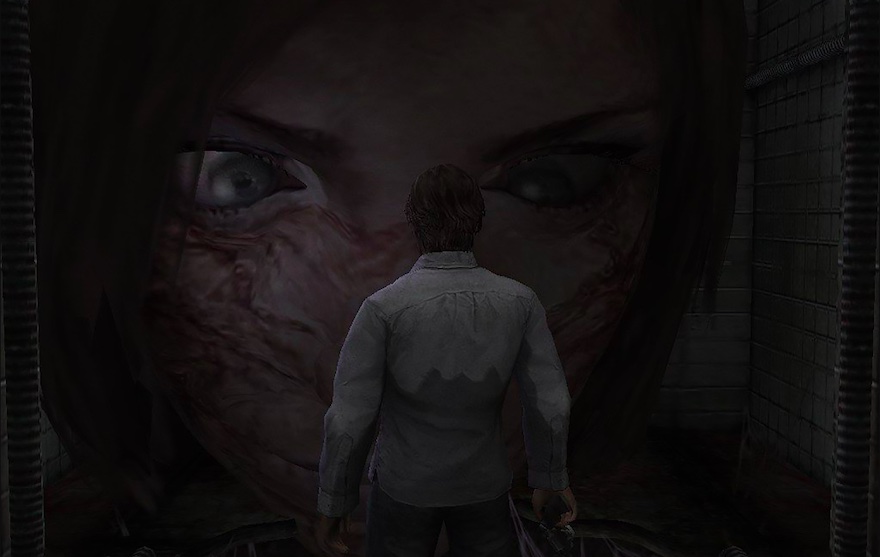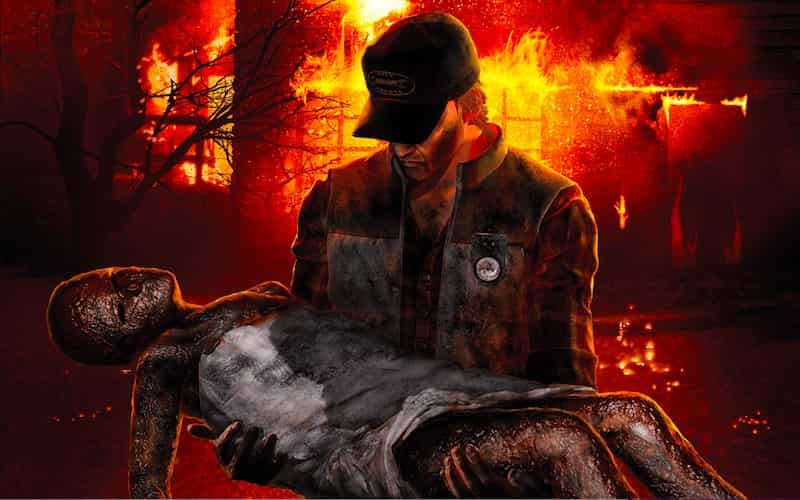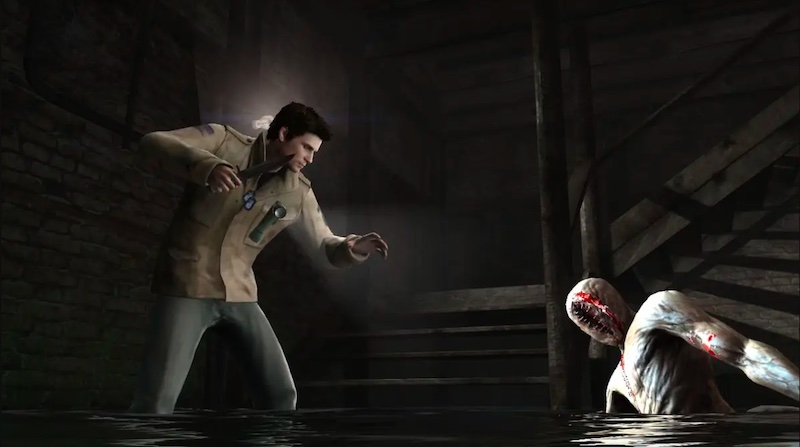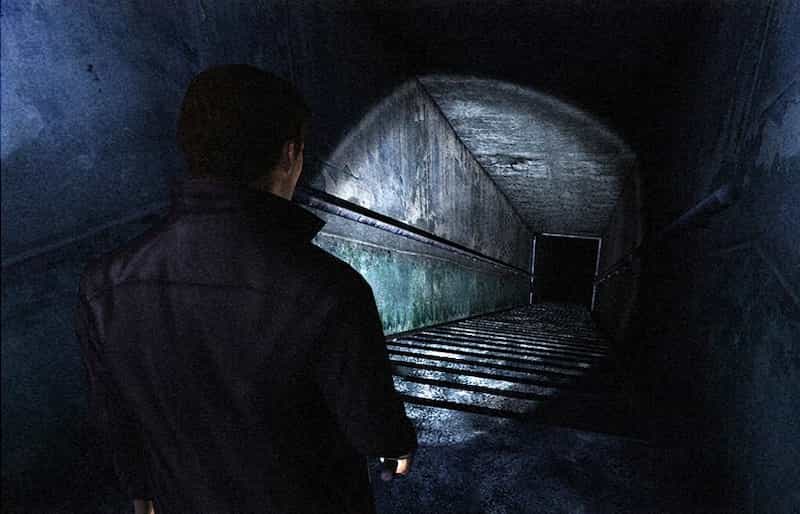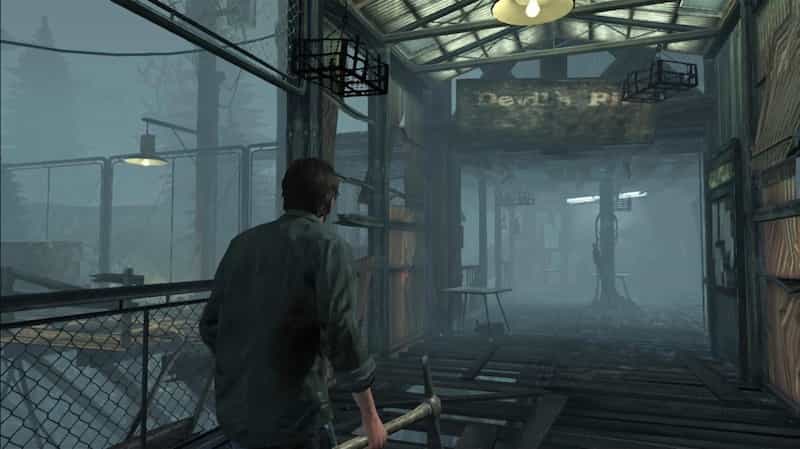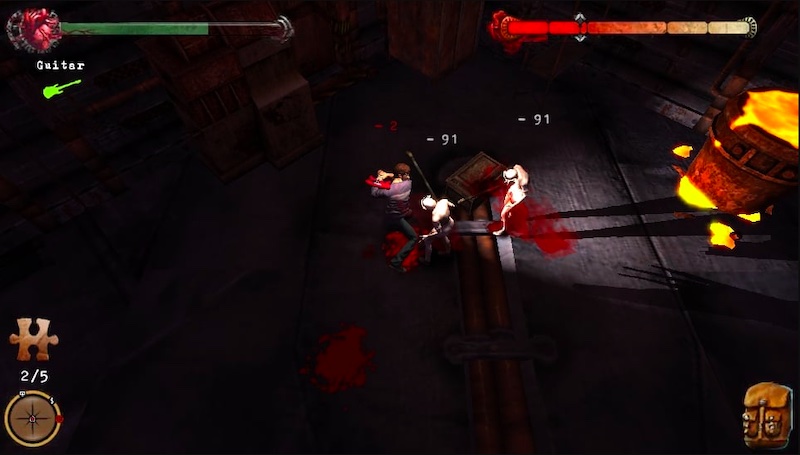January 31, 2024 marked the 25th anniversary of Konami’s seminal psychological horror masterpiece, Silent Hill.
Developed by Team Silent, the title proved a far cry from the jump-shock tactics of contemporary chillers such as Resident Evil and Alone in the Dark, offering a far more cerebral experience by comparison. Its marriage of grotesque visuals, intricate storyline, spine-shivering soundtrack, and Joe Ordinary protagonist, ensured it crafted its own unique blend of horror not seen up to that point.
History of Silent Hill Games
The original Silent Hill went on to spawn numerous sequels and spin-offs, cementing the pant-wetting brand as one of Konami’s most successful IPs. Okay, so it was a bit of a bumpy ride along the way, and the franchise was left on ice for more than a decade, but with Silent Hill now 25-years-old, there’s no better time than to revisit the series.
With that said, welcome to Silent Hill. Don’t forget your flashlight!
Silent Hill (1999, PlayStation)
Release: January 31 (North America), March 4 (Japan), August 1 (Europe)
Directed by Keiichiro Toyama, the original Silent Hill arrived following turbulent development cycle that saw lots of material left on the cutting room floor. Interestingly enough, it is left ambiguous as to when exactly Silent Hill takes place; fans have deduced it is set in the 1980s, but this still remains a widely-debated topic among players.
The game opens as Harry Mason and his daughter, Cheryl, are driving to Silent Hill on vacation, only for a mysterious figure to step out in front of their jeep. Harry swerves to avoid the figure and ends up crashing on the side of the road, only to wake up and find Cheryl has scampered into the fog. Alone and lost, our everyday hero sets off into the streets to find his daughter, unaware of what horrors await him…
Silent Hill is a different beast than Resident Evil visually speaking, with fully 3D environments used to immerse players in its fog-bound locations. Ostensibly used to create a tense atmosphere, the fog masks the limitations of the game engine and the nasty pop-up that comes with it, while Akira Yamaoka’s chilling soundtrack combines industrial grind, chilling ambience and lush acoustic guitar work that makes for the perfect complement to the action.
Harry is just an ordinary bloke, not a trained police officer or hardened combatant. Therefore, the way he moves and fights off enemies reflects this; he’s clumsy, can trip up on steps if you dash off them, and frequently misses shots if not timed carefully. The grotesque creatures that populate Silent Hill’s macabre environments are as nightmarish as they are fascinating, from rotten canines, parasite-infected medical staff, demonic sewer creatures and pesky cockroaches that nibble at your feet.
A town of two faces, Silent Hill’s foggy streets and deserted buildings occasionally undergo a violent metamorphosis, where the ‘Otherworld’ takes hold. This bloody, rusted and twisted realm serves as the deepest and darkest of Silent Hill’s malevolent grip on reality, where hanging corpses and gaping chasms are commonplace. Furthermore, some of the staple enemies also mutate, becoming a twisted mass of flesh with worm-like features.
Silent Hill doesn’t really wonder off the survival horror paradigm, but it executes it in such a way that it feels unique and fresh. The narrative has more in common with Jacob’s Ladder than B-movie horror, and its puzzles are fiendish and expertly weave into its rich tapestry of macabre curiosities – finding a key next to a dog’s head used in a game of basketball, anyone?
Silent Hill 2 (2001, PlayStation 2)
Release: September 24 (North America) September 27 (Japan) November 23 (Europe)
A landmark release in horror video games and for many the undisputed champion of the series, Silent Hill 2‘s triumphs are hard to succinctly quantify. Released on PlayStation 2 and later ported to PC and Xbox, the Masashi Tsuboyama-directed follow-up to Konami’s foray into the horror genre was both an aesthetic and mechanical triumph.
Significantly, SH2 wasn’t a direct follow-up to the original; rather, the game takes place years later in 1994, with gamers thrust into the shoes of an entirely new protagonist, namely mild-mannered store clerk, James Sunderland. Any sense of normality stops there however, as it is revealed Sunderland is in town searching for his wife, who just happens to have died three years earlier.
That didn’t stop her from sending our reluctant hero a letter beckoning him to the cursed town though, and thus begins James’ trek through Silent Hill in search of the truth.
Visually, Team Silent were able to harness the power of PS2 to pump out some stomach-churning aesthetics; environments ooze filth and grime, while the demonic denizens of the fog-bound town sport some truly bizarre and grotesque mannerisms and designs.
After all, who could forget the iconic Pyramid Head, or the busty Bubble-Head Nurses? Indeed, Silent Hill 2 conjured some of the most memorable adversaries the series has seen—not to mention the freakiest—all of which are intrinsically tied to the game’s twisted narrative. Gameplay-wise not much has changed, with Konami’s chiller packing the same winning combination of exploration, riddle-solving, and visceral combat that dominates the horror genre.
However, it’s the spine-chilling story and gut-wrenching atmosphere that cemented Silent Hill 2 as one of the best horror video games of its time, and the reason it still rears it blood-soaked head in ‘Best of’ lists to this day. Indeed, Team Silent effortlessly perpetuates a feeling of uneasiness even in the most innocuous of situations, while weaving a psychologically-driven narrative that keeps you guessing until the curtain call—it wouldn’t be the same without James though, whose story is far more personal than any other SH game to date, which I dare not spoil. If you haven’t already experienced it, do yourself a favor and snap it up, sharpish.
An Xbox, dubbed ‘Restless Dreams/Inner Fears,’ was released in 2002 featuring the sub-scenario ‘Born From A Wish,’ which focuses on the origins of the plot-centric character, Maria. It also came to PS2 and PC as Silent Hill 2: Director’s Cut, and received a high-definition port for PS3 and Xbox 360 in 2012 complete with all-new voice acting.
Silent Hill 3 (2003, PlayStation 2)
Release: August 6 (North America) July 3 (Japan) May 23 (Europe)
The third chapter in the perpetually foggy horror series is significant for two things:
- Silent Hill 3 is a full-blown sequel to the original Silent Hill set 17 years after Harry’s journey.
- It introduces the first—and to date, only—female protagonist in the franchise in the shape of teenager Heather Mason.
By this point, the series had established itself as one of the tent pole franchises on PlayStation, and SH3 in particular was renowned for its stunning visuals. Even today, the technical polish that Team Silent injected into its 2003 horror fest is nothing short of impressive, with grotesque, lavishly-detailed environments complemented by some of the most meticulously-realized character models of the PS2 era.
In fact, a shot of Douglas Cartland from one of the early cut scenes is a favorite among forum posters to wave around as the poster boy for PS2-era visual wizardry. But I digress. As the follow-up to SH1, Heather’s adventure eschews much of the psychological elements seen in its predecessor, instead adhering more to the cult-centric scares that solidified SH1’s narrative.
It’s still a very personal journey, however, as the young teenager is slowly, yet inexorably drawn to discovering her true identity and importance in the twisted, malevolent world of Silent Hill. By this point one could have accused the series of becoming slightly formulaic; after all, SH3 did little to deviate from the series template up until that point.
Team Silent once again delivered an eclectic line-up of hellish creatures to battle, including the bloated, lumbering ‘Insane Cancers’ and deadly ‘Missionary.’ However, while it lacked an adversary as iconic as Pyramid Head, some of the series’ best scares can be found within SH3’s blood-drenched walls, such as the chilling mirror room scene found in Brookhaven Hospital. Unlike SH2 and subsequent games, Silent Hill 3 was a console exclusive to PlayStation 2 until the high-definition revamp back in 2012—complete with all-new voice acting.
Silent Hill The Room (2004, PlayStation 2/PC/Xbox)
Release: September 7 (North America) June 17 (Japan) September 17 (Europe)
The Room is a curious entry in the series, not least because it was originally conceived as a new title completely disparate from Silent Hill. However, while the developers initially wanted to move away from the franchise and try something different, they ultimately decided to blend it with the Silent Hill mythos while still encapsulating the unique feel of their original plans.
Thus, The Room was born, perhaps the most controversial and polarizing entry in the Silent Hill series to date. For starters, the game doesn’t actually take place in Silent Hill—at least, not for a large chunk of the action. The Room takes place in 2004 and stars mild-mannered Henry Townsend, who moves into his new apartment—Room 302— at Ashfield Heights; a town some miles from the series’ eponymous, monster-infested settlement.
This is where the game’s subtitle is derived from, as Silent Hill 4 centres on Townsend’s pokey little abode, which players soon come to realize is haunted and full of demonic activity. It acts as a hub if you like; a portal to other ‘dimensions’ of sorts, most of which are in or around the town of Silent Hill. From room 302, you’ll explore areas such as a prison, forest, apartment complex, and more as you uncover the complex tale of one Walter Sullivan, a mass murderer who appears to have cheated death and embarks on another bloody rampage around Ashfield. It’s not just the setting that deviates from the norm; Team Silent revamped the combat system to make it more accessible, thrusting breakable melee weapons into the limelight over firearms.
The overall result is certainly a feeling of uniqueness among each of the locations, though it does end up feeling slightly less coherent as a result. Nonetheless, the game was praised for its attempt at offering smoother combat mechanic. Perhaps one of the most significant additions however is the various hauntings that occur in your apartment. Henry must exorcise these malevolent beings in order to safely navigate room 302, while various ghosts in the game world will stalk you constantly, and can only be subdued with silver bullets or specialized swords. Regardless of your affiliation with The Room, one thing you can’t accuse Team Silent of here is not taking a much-needed risk with its flagship series.
This is where the game’s subtitle is derived from, as Silent Hill 4 centres on Townsend’s pokey little abode, which players soon come to realize is haunted and full of demonic activity. It acts as a hub if you like; a portal to other ‘dimensions’ of sorts, most of which are in or around the town of Silent Hill.
From room 302, you’ll explore areas such as a prison, forest, apartment complex, and more as you uncover the complex tale of one Walter Sullivan, a mass murderer who appears to have cheated death and embarks on another bloody rampage around Ashfield. It’s not just the setting that deviates from the norm; Team Silent revamped the combat system to make it more accessible, thrusting breakable melee weapons into the limelight over firearms.
The overall result is certainly a feeling of uniqueness among each of the locations, though it does end up feeling slightly less coherent as a result. Nonetheless, the game was praised for its attempt at offering smoother combat mechanic.
Perhaps one of the most significant additions however is the various hauntings that occur in your apartment. Henry must exorcise these malevolent beings in order to safely navigate room 302, while various ghosts in the game world will stalk you constantly, and can only be subdued with silver bullets or specialized swords. Regardless of your affiliation with The Room, one thing you can’t accuse Team Silent of here is not taking a much-needed risk with its flagship series.
Silent Hill: Origins (aka Silent Hill: Zero) (PlayStation Portable/PlayStation 2)
Release: November 6, 2007 (North America) December 6, 2007 (Japan) October 26, 2007 (Europe)
This horror prequel marked a significant change in the Silent Hill series, being the first entry to be handed over to a western developer. Initially given to Climax Studios’ North American branch—where the game took much influence from Capcom’s Resident Evil 4— issues with the project eventually lead to the company handing the development reins over to Climax U.K., who cobbled together the final version released in 2007.
Origins stars trucker Travis Grady in the late 1970s prior to the events of the original Silent Hill, where he finds himself rescuing a young Alyssa Gillespie from a burning house—an event which would act as the catalyst to the nightmarish conditions in the original Silent Hill. Again, the Otherworld takes centre stage, but this time you are able to transition between realms via mirrors dotted throughout the landscape, while Grady is now able to brawl with foes in a game of fisticuffs, though melee and firearms are still at the forefront of combat.
Origins didn’t abandon its Resi 4 inspirations entirely at Climax U.K., though, as QTEs also slip into the action if you are grappled by an enemy, allowing you to extricate yourself from their grasp without injury—although it works both ways, mind. While the series had cut ties with Team Silent, music maestro Akira Yamaoka still returns to weave his magic once again for Origins and would remain as chief composer for many games to come.
Yet, despite the shift in development studios, Silent Hill Origins is as true to the series’ established paradigm as any of its predecessors, and remains one of the most popular post-Team Silent endeavours, though the PlayStation 2 port released a year can’t hold a candle to its PSP counterpart. Think Silent Hill is less pant-soiling on a smaller screen? Think again.
Silent Hill: The Arcade (Arcade)
Release: July 25, 2007 (Japan) 2008 (Europe)
A House of the Dead-style shoot-’em-up is about as rapid departure from the quintessential Silent Hill experience as you can get, but that’s exactly what Konami did back in 2007 with this curious light gun romp. The game sees a group of students investigating the local legend of the ill-fated Little Baroness, a steamer that foundered in Toluca Lake back in the 1910s and was briefly mentioned in a Silent Hill 2 newspaper clipping.
21-year-old Eric, grandson of the captain of the Little Baroness, is the game’s lead protagonist, and is joined by a group of fellow college chums as they venture into the foggy town and find it infested with malevolent creatures.
Soon enough, the group ends up being attacked, and it’s up to Eric and his female companion, Tina, to remedy the situation with hot lead as you investigate a series of classic Silent Hill locations, such as Brookhaven hospital and more.
Ever wondered what would happen if Silent Hill met SEGA’s venerable zombie shoot-’em-up franchise? The Arcade pretty much is your answer. While not exactly your typical Silent Hill adventure, The Arcade was never given a home console port, so if you find yourself able to play one, it’s probably best to give it a go all the same.
Silent Hill: Homecoming (PlayStation 3/Xbox 360/PC)
Release: September 30, 2008 (North America) February 27, 2009 (Europe) (Japan release canceled)
The debut Silent Hill for PlayStation 3 and Xbox 360, Homecoming perpetuated the series’ new-found desire for outsourcing development to western companies, as well as attempting to cater to more mainstream action fans. Developed by Double Helix Games, Homecoming was a standalone adventure that introduced a new slew of characters, chief among which includes the Alex Shepherd, a 20-something former soldier who acts as the game’s protagonist.
Homecoming explores the nearby town of Shepherd’s Glenn and its connection to the series’ demonic town, specifically the resident’s act of appeasing Silent Hill’s gods by sacrificing a child of the family every 50 years. Aside from a wealth of new locations—all of which are coated in the perennial fog that plagues Silent Hill itself—the central district of town makes a return, as does a revamped Alchemilla Hospital.
Double Helix’s take on combat is the closest yet to a modern action-adventure rendition of the series. There’s the over-the-shoulder camera for starters, allowing you to target specific body parts and weak points, while melee combat has also received something of an overhaul.
Given Shepherd’s military history, players can now execute an array of fancy maneuvers to dodge foes and counterattack. Western influence also creeps into the creature designs, with many enemies—notably Pyramid Head and the Nurses—sharing aesthetical similarities with the 2006 movie adaptation of Silent Hill by Christophe Gans.
Silent Hill: Shattered Memories (Wii, PlayStation Portable, PlayStation 2)
Release: December 6, 2009 (North America) March 25, 2010 (Japan) February 26, 2010 (Euorpe)
Climax returned to the series with Silent Hill: Shattered Memories in 2009, a re-imagining of the original horror classic that proved quite a departure from the 1999 groundwork. The most significant change is that Shattered Memories eschews any form of combat, with players forced to escape and hide form foes—this time taking the form of humanoid creatures known as Rawshocks—rather than face them directly.
Harry Mason once again takes centre stage, albeit in a vastly overhauled incarnation sporting glasses who explores a chilly Silent Hill that becomes encased in ice during the Otherworld transitions. More interestingly, players start off their journey in a psychiatrist’s ward, where they are presented with a series of seemingly arbitrary questions (how much do you drink, do you engage in any sexual fetishes, etc) which ultimately shape how Mason reacts to characters throughout his adventure.
The core cast return, though their roles have altered since the original game. For example, Dhallia is now a sultry, 20-something compared to the cult-obsessed old hag she was portrayed as in 1999’s Silent Hill. Mason is also far more tech-savvy than he was in the first game, now wielding a smartphone he can use for various purposes, such as GPS tracking, phone calls, and taking snapshots of items in the environment.
These changes resulted in a far more survival horror feel to the proceedings, and Shattered Memories was among the best-received western titles to date; however, its ‘chase’ sequences attracted some criticism for becoming too repetitive, and some pockets of fans lamented the lack of authentic combat.
Shattered Memories also showed up on PS2 and PSP, though it has to be said the original Wii version remains the most compelling edition to play.
Silent Hill: Downpour (PlayStation 3/Xbox 360)
Release: March 13, 2012 (North America) November 8, 2012 (Japan) March 29, 2012 (Europe)
Konami handed development of the latest core title to now-defunct Vatra Games, who cobbled together the pseudo-sandbox offering, Silent Hill: Downpour in spring 2012. Unlike the linear-focused Silent Hill games of old, Downpour offered a more open environment for players to explore, introducing side quests for the first time in the venerable scare-’em-up franchise.
Players controlled newcomer Murphy Pendleton, a convict who finds himself stranded in the foggy streets of Silent Hill after his prison transport bus crashes on the outskirts of town. Vatra offers a whole new, previously unexplored area of the eponymous town to investigate, and there’s far more emphasis on visiting the winding streets, alleyways, and surrounding woodland.
In an attempt to elongate the game’s replay value, Downpour also introduces branching dialogue and multiple endings, giving you more incentive to tackle the horrors of Silent Hill at least half-a-dozen times if you want to have a gander at everything the game has to offer.
While the game was met with mixed reviews, Downpour enjoyed praise from long-time fans for its return to the more traditional survival horror experience. Exploration was pushed to the forefront of the action, with ammunition and healing items a rare commodity.
Sadly, the creature design was among the most heavily criticized component of Downpour, lacking the ingenious spark of Team Silent’s monstrosities, instead proving decidedly generic by comparison. Nonetheless, we found the game to be a compelling horror romp.
Silent Hill Book Of Memories (PlayStation Vita)
Release: October 16, 2012 (North America) February 14, 2013 (Japan) November 2, 2012 (Europe)
The second handheld outing in the multi-million selling horror franchise, Book of Memories is a PlayStation Vita-exclusive top-down romp that marks a rapid departure from past Silent Hill games. The game isn’t strictly part of the main canon; rather, it’s a spin-off of sorts, with players able to explore various rust-covered, blood-drenched locations with various non-descript characters, who are fully customizable.
The object? Trundle through each room, dispatching foes using melee or firearm-based weapons, encountering a few cerebral-based challenges along the way. Book of Memories is notable for introducing multiplayer for the first time in the series, allowing gamers to team up together to take down the malevolent forces of Silent Hill. If anything, the game has more in common with dungeon crawlers like Diablo than Silent Hill, as you’ll be picking up tons of loot and upgrading your weapons and items along the way. There’s even a shop where you can purchase essential supplies from.
P.T Demo (canceled Silent Hills teaser)
Release: 12, August, 2014
Last, but not least, the P.T. demo arrived on PS4 and was a teaser for Silent Hills, the now canceled next instalment in the horror series. It’s heart-breaking to see the potential of the game, which switch things up to the first-person perspective and was gloriously creepy. When Kojima left Konami, Director Guillermo del Toro left too and in 2015 he said he would no longer be involved. Instead, they teamed up to work on Death Stranding.
So, there we have it. 25 years of pant-soiling antics, courtesy of Konami, Team Silent, and numerous other developers who have weaved their magic within the malevolent, twisted world of Silent Hill. After more than a decade of silence, Konami has finally confirmed a comeback for the series, with multiple games in the works including a Bloober Team-developed Silent Hill 2 Remake.
Let us know your favorite Silent Hill moments below!
